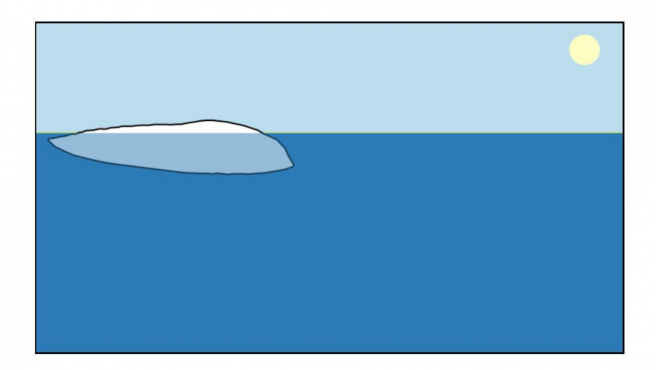
The Internet and its infinite possibilities never cease to amaze us. Megan Thompson-Munson, a PhD student in the Department of Atmospheric and Oceanic Sciences at the University of Colorado Boulder, has developed a website that allows you to draw an iceberg in the shape and size you want -or that the screen allows- and simply see how it floats forever
According to the author herself, she has “channeled her energy” to develop “this very‘ unofficial ’but passionate request” with the aim that “scientists begin to draw icebergs in their stable orientations”. “I took the trouble to paint a stable iceberg with my watercolors, so please listen to me,” she adds in a funny tone in her Twitter message.
The ‘classic’ image of an iceberg, continues in his Thompson-Munson Twitter thread, “is usually a kind of ice cream cone shaped chunk 90% below the surface of the water and 10% below the surface of the water. above”. “While it is true that only about 10% floats on the surface of the water, the‘ classical ’orientation is unstable and would not really be found in nature. An elongated iceberg would not float on his head, but on his side, ”she emphasizes.
Thompson-Munson proposes
That is: although we are used to seeing the elongated vertical iceberg, Thompson-Munson proposes that scientific diagrams show “stable orientations that are more likely to exist in nature.”
If we enter her website and draw an iceberg at will, we will see that according to the author’s calculations, the piece of ice would not be in a perfect vertical position, but would “rise” towards the surface. Even if our design is elongated, when placed it would lose its verticality to stay “belly up” – as in the image in this news item.
About the thaw, Thompson-Munson responds to another user that “when an iceberg melts, it doesn’t melt evenly, so the shape will start to change. This means that the center of gravity will shift and the iceberg will ‘tip over’ or roll over to readjust to a more stable orientation. “
Some of the comments responding to Thompson-Munson’s tweets show videos of icebergs turning around, a real – and quite terrifying – phenomenon that occurs in nature.






